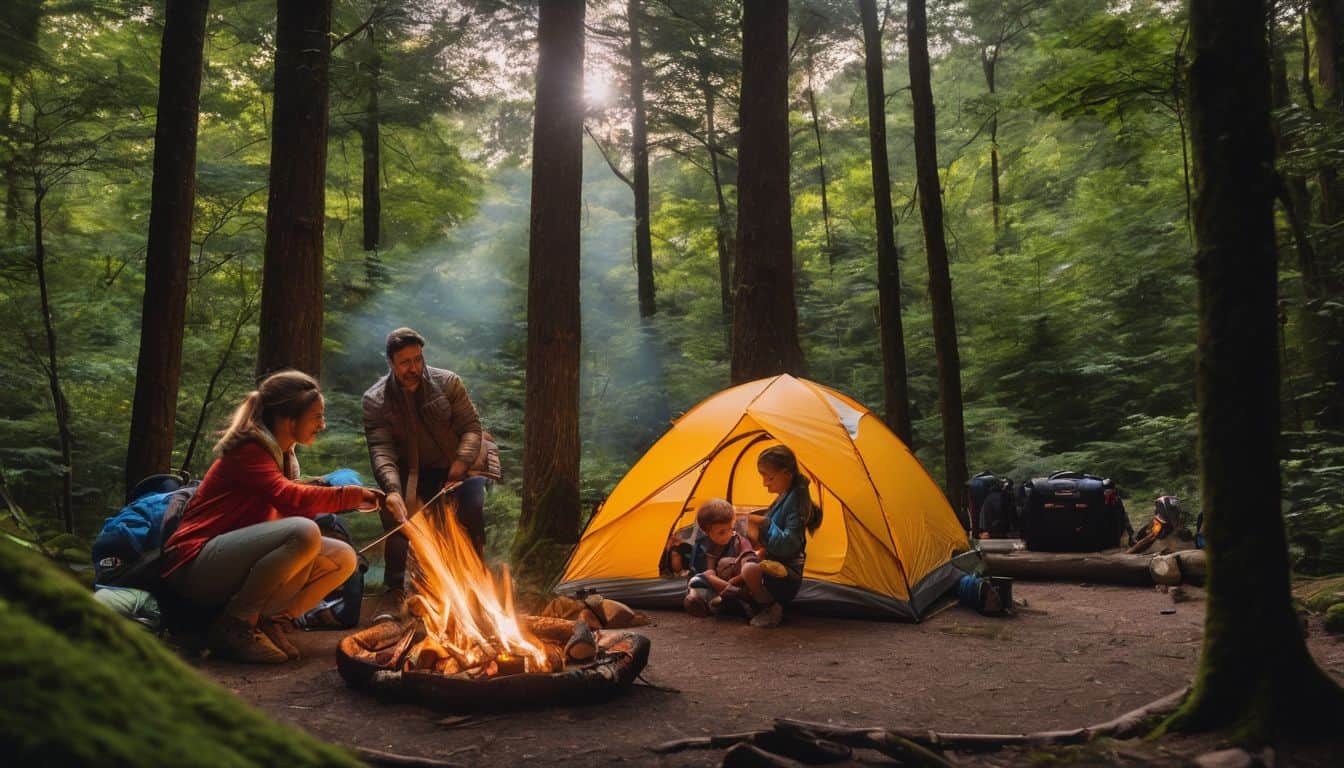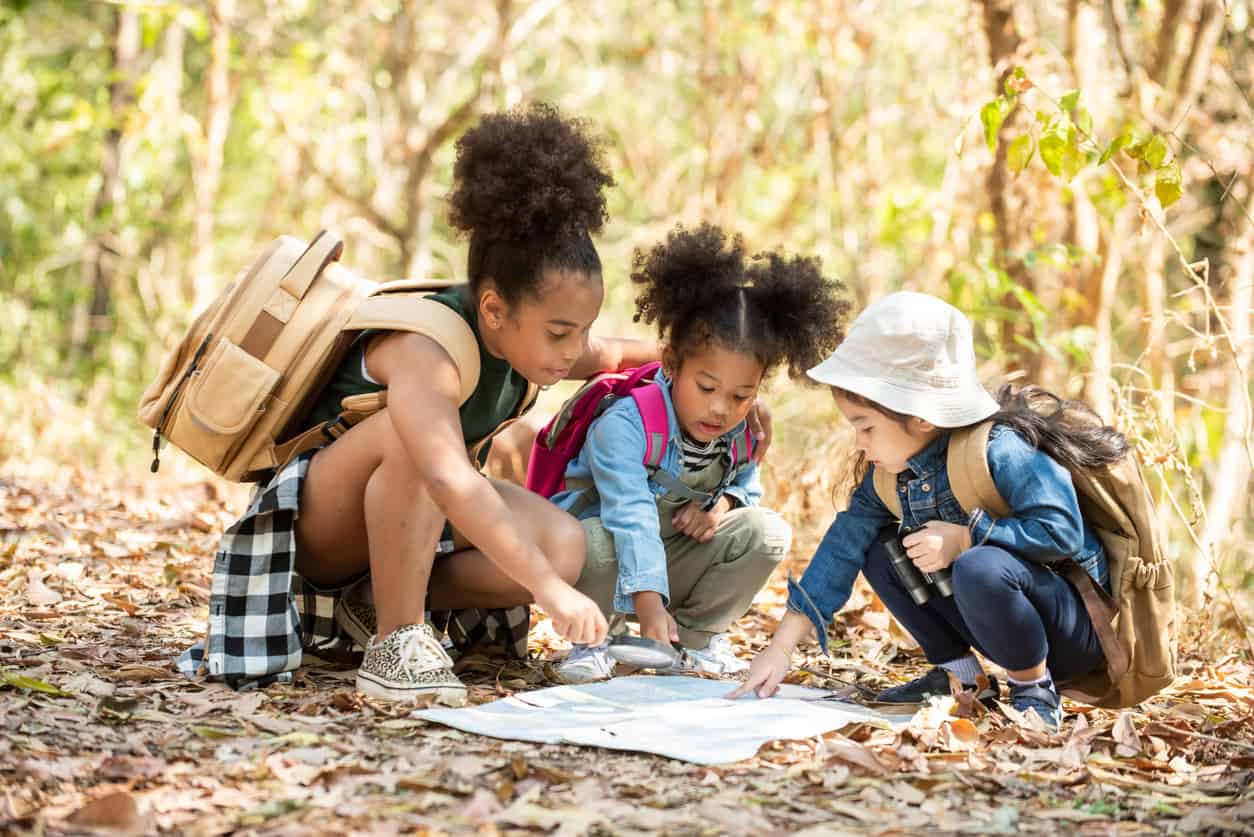Family camping is an excellent way to bond, disconnect from technology, and create lasting memories in the great outdoors. This guide will help you plan and execute a successful family camping trip.
Planning Your Family Camping Trip
Choose the Right Campsite
- Consider amenities like bathrooms, showers, and playgrounds
- Look for family-friendly campgrounds with activities for kids
- Start with car camping for easier access to supplies
Selecting the right campsite is crucial for a successful family camping trip. Look for campgrounds that offer amenities suitable for families, such as clean bathrooms, shower facilities, and playgrounds. Family-friendly campgrounds often provide organized activities for children, which can enhance the camping experience.
For beginners, car camping is an excellent option as it allows easy access to supplies and a quick retreat if needed. Research campgrounds thoroughly, reading reviews from other families to ensure the site meets your needs.
For families who need to stay connected, learn how to get internet while camping without compromising the outdoor experience.
Involve the Whole Family in Planning
- Let kids help choose activities and meals
- Assign age-appropriate tasks to each family member
Involving the entire family in the planning process builds excitement and gives everyone a sense of ownership over the trip. Allow children to help choose activities or meals, which can increase their enthusiasm and cooperation. Assigning age-appropriate tasks, such as helping to set up the tent or gathering firewood, teaches responsibility and teamwork. This collaborative approach can make the camping experience more enjoyable and educational for everyone.
Plan Your Meals
- Prepare simple, kid-friendly meals
- Pack plenty of snacks and water
- Consider pre-preparing some meals at home
Meal planning is essential for family camping. Opt for simple, kid-friendly meals that are easy to prepare at the campsite. Pack an abundance of snacks and water to keep energy levels up during activities. Pre-preparing some meals at home can save time and reduce stress at the campsite. Consider one-pot meals, foil packet dinners, or pre-made sandwiches for easy campsite dining. Don’t forget to plan for dietary restrictions and include some treats to make the experience special.

Essential Gear for Family Camping
Shelter
- A spacious tent or multiple tents for larger families
- Sleeping bags and sleeping pads for everyone
- Extra blankets for cooler nights
Proper shelter is crucial for comfortable family camping. Choose a tent that’s spacious enough for your family or consider multiple tents for larger groups or families with older children. Ensure everyone has a suitable sleeping bag and sleeping pad for insulation and comfort. Pack extra blankets for unexpected cold nights or for added coziness around the campfire. A good shelter setup ensures restful nights, which are essential for enjoyable days outdoors.
Cooking Equipment
- Camp stove and fuel
- Cooler for perishables
- Easy-to-clean cookware and utensils
Efficient cooking equipment makes meal preparation easier and more enjoyable. A reliable camp stove and sufficient fuel are essential for cooking meals. A good cooler keeps perishables fresh and safe to eat. Choose cookware and utensils that are easy to clean and durable enough for outdoor use. Don’t forget items like a can opener, cutting board, and food storage containers. Well-planned cooking equipment ensures you can prepare satisfying meals for your family in the outdoors.
Lighting
- Lanterns for the campsite
- Headlamps or flashlights for each family member
Adequate lighting is important for safety and comfort after dark. Lanterns provide general illumination for the campsite, making evening activities and meal preparation easier. Individual headlamps or flashlights allow family members to move around safely at night and are essential for nighttime trips to the bathroom. Consider bringing extra batteries or rechargeable options to ensure you have light throughout your trip.
First Aid and Safety
- Well-stocked first aid kit
- Insect repellent and sunscreen
- Emergency contact information
Safety should always be a top priority when camping with family. Pack a comprehensive first aid kit that includes items for treating minor injuries and ailments. Insect repellent and sunscreen are crucial for protecting against bites and sunburn. Always carry emergency contact information, including details of the nearest medical facilities. Familiarize yourself with basic first aid procedures and discuss safety rules with your family before the trip.
Activities for Family Camping
Nature Exploration
- Go on family hikes
- Try birdwatching or animal tracking
- Collect leaves or rocks (where permitted)
Nature exploration is a core part of the camping experience. Family hikes are a great way to discover the local flora and fauna together. Introduce kids to birdwatching or animal tracking to enhance their observation skills and connection with nature. Where permitted, collecting leaves or rocks can be a fun activity that also teaches about local ecosystems. Always emphasize the importance of leaving no trace and respecting wildlife habitats.
Campfire Fun
- Tell stories around the campfire
- Roast marshmallows and make s’mores
- Sing campfire songs
Campfire activities are often the highlight of family camping trips. Storytelling around the fire creates lasting memories and can be both entertaining and educational. Roasting marshmallows and making s’mores is a classic camping treat that kids and adults alike enjoy. Singing campfire songs together fosters a sense of togetherness and can be a fun way to wind down the evening. Always follow fire safety rules and never leave a campfire unattended.
Outdoor Games
- Bring frisbees, balls, or card games
- Organize a scavenger hunt
- Try stargazing at night
Outdoor games keep everyone entertained and active. Pack lightweight, versatile items like frisbees or balls for impromptu games. Organizing a nature-themed scavenger hunt can be both fun and educational. Stargazing at night introduces children to astronomy and the wonders of the night sky. These activities promote physical activity, learning, and family bonding in the natural environment.
Water Activities (if near water)
- Swimming
- Fishing
- Kayaking or canoeing
If your campsite is near a body of water, water activities can add an extra dimension of fun to your trip. Swimming is a refreshing way to cool off on hot days. Fishing can be a relaxing family activity that also teaches patience and respect for nature. Kayaking or canoeing allows for exploration of waterways and can be a great family bonding experience. Always prioritize water safety, use appropriate safety equipment, and supervise children closely during water activities.
For more ideas on what to do while camping, check out our comprehensive activity guide.
Tips for Camping with Kids
Safety First
- Establish clear boundaries for kids
- Teach basic outdoor safety rules
- Have a plan in case someone gets lost
Safety is paramount when camping with children. Clearly define the areas where kids can roam freely and establish firm boundaries. Teach children basic outdoor safety rules, such as not approaching wildlife, staying on marked trails, and always being within earshot of adults. Develop a plan for what to do if someone gets lost, including a designated meeting point and how to use a whistle or other signaling device. Consider giving each child a safety whistle and teaching them how to use it in emergencies.
Comfort is Key
- Bring familiar items from home (favorite toys or blankets)
- Pack extra clothing for unexpected weather changes
- Consider bringing camping chairs for comfortable seating
Ensuring comfort can make or break a family camping trip. Familiar items from home, like a favorite stuffed animal or blanket, can provide comfort and help children sleep better in an unfamiliar environment. Pack plenty of extra clothing to accommodate unexpected weather changes or messy outdoor play. Comfortable seating, such as camping chairs, can make mealtimes and relaxation more enjoyable for everyone, especially after a long day of activities.
Keep it Fun and Educational
- Use the trip as a learning opportunity about nature
- Bring field guides or nature journals
- Encourage kids to unplug and engage with their surroundings
Camping offers numerous opportunities for fun and learning. Use the trip to teach children about local flora, fauna, and ecosystems. Bring along field guides or nature journals to encourage observation and documentation of discoveries. Encourage kids to unplug from electronic devices and fully engage with their surroundings. This can foster a deeper appreciation for nature and create lasting memories.
Be Flexible
- Allow for downtime and naps
- Have backup plans for rainy days
- Don’t overschedule – let kids explore and play freely
Flexibility is key when camping with kids. Allow for plenty of downtime and naps, especially for younger children who might get overwhelmed or tired easily. Have backup plans for rainy days, such as board games or books. Avoid overscheduling activities; instead, allow ample time for free play and exploration. This unstructured time often leads to the most memorable experiences and allows children to develop a personal connection with nature.
Minimalist Approach to Family Camping
For those looking to simplify their camping experience:
- Focus on essential gear only
- Choose multi-purpose items when possible
- Encourage kids to pack their own small backpacks
- Emphasize experiences over material comforts
A minimalist approach to family camping can enhance the outdoor experience by reducing clutter and focusing on essentials. Carefully select gear that serves multiple purposes to minimize what you need to pack and manage. Involving children in packing their own small backpacks teaches responsibility and helps them understand the concept of bringing only what’s necessary. By emphasizing experiences over material comforts, you can help your family appreciate the simplicity and beauty of nature.
Leave No Trace Principles for Families
- Teach kids about respecting nature
- Practice proper waste disposal
- Leave natural objects where you find them
- Minimize campfire impacts
Introducing Leave No Trace principles to children is crucial for fostering environmental stewardship. Teach kids about the importance of respecting nature and leaving campsites as they found them. Demonstrate proper waste disposal techniques and explain why it’s important to pack out all trash. Encourage children to observe and appreciate natural objects without removing them from their environment. When having campfires, teach kids about minimizing impact by using established fire rings and fully extinguishing fires.
Conclusion
By following these tips and principles, you can create a memorable and enjoyable family camping experience that not only brings your family closer together but also instills a love and respect for nature in your children. Remember, the goal is to have fun, bond as a family, and create lasting memories in the great outdoors.
If you’re new to camping, our beginner’s guide to types of camping can help you choose the best camping style for your family.

Leave a Reply